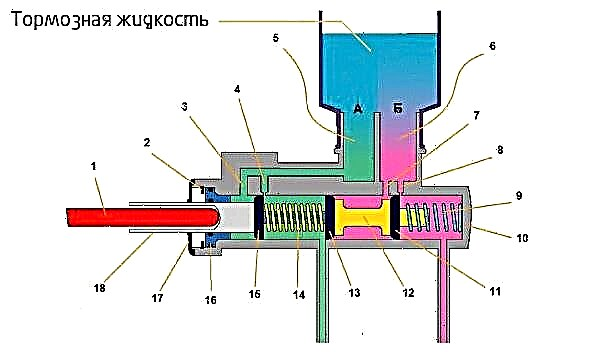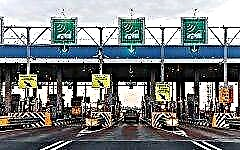
Toll highways have been actively exploited all over the world for a long time. In Russia, there are also such, and although at the moment there are not many of them, the collection of tolls on some sections of roads, bridges and overpasses is no longer surprising. The policy of reimbursement of construction and maintenance travel costs at the expense of transport companies and private users is gaining momentum every year.
What are the advantages of toll roads over conventional ones

Toll roads usually serve as an alternative to the available free routes, which annoy motorists with poor coverage, inconvenient junctions, an abundance of traffic lights and traffic jams due to low traffic capacity, especially in densely populated areas, speed restrictions and other inconveniences. Using them is sometimes very uncomfortable, and the arrangement requires so much effort and money that sometimes it is easier to pave a new path than to tidy up the old one.
Given the vast territory of the Russian expanses, it is not surprising that the network of highways covering it is being actively modernized only in densely populated regions, and often not along the entire length of the route, but only in separate segments.
The quality of Russian roads, despite countless significant technological breakthroughs in recent years, is still the subject of sarcastic jokes and bitter disappointment. When it comes to the shortcomings of toll roads, one can only criticize the prices and the service, which does not always correspond to the expected level.
Most of the criticism is caused by toll points, annoying with periodic congestion of transport and errors in work, but as electronic remote control is introduced, they become better - more accurate and less troublesome in passing.
Since about 80% of drivers use a transponder, most of the billing and registration process is automated. Automatic Vehicle Identification (AVI) helps ensure smooth traffic flow. Drivers do not need to slow down or stand in lines to pass through the toll station. There are fewer delays, making travel more enjoyable and happier travelers.
In addition, drivers can be confident that they will be charged the right amount - accurate and without compromising personal information, since today's electronic systems provide the same level of security as a contactless bank card or electronic ID. Passive technologies provide a breakthrough in the use of multi-lane transport checkpoints, allowing them to operate more efficiently, more comfortably and at lower costs.
For greater convenience of users, the range of benefits and opportunities to pay for travel is also gradually expanding. Prices can be reduced based on various factors, including seasonal / daily fluctuations in fares and discounts for regular users, and depositing the required amounts is facilitated through advance and / or remote payments - for example, through the use of mobile applications, e-tickets and contactless smart kart.
What are the most expensive roads in Russia

The toll collection system is currently deployed mainly only on the central highways of Russia. Including one of the most intensively used high-speed highways - M1 "Belarus", connecting Moscow with Belarusian Minsk, M3 "Ukraine" (on the route from the capital of the Russian Federation to the Ukrainian border, two toll sections in the Kaluga region), as well as the Central Ring Road, M8 "Kholmogory" ( Moscow-Arkhangelsk) and M4 "Don", which connects the administrative and political center of the Russian Federation with resort towns near the Black Sea.
As required by Russian legislation, toll roads can only exist where there is a free alternative backup, although an exception for the Far North has appeared in the rule since 2019. So far, it is only in this harsh, inaccessible region that the laying of uncontested toll routes (or the reconstruction and modernization of old ones with subsequent collection of fees) has been legalized, but with many restrictions (the path must run outside the settlements, in some areas it is allowed to charge only freight transport, etc.). etc.).
The price list may vary depending on the kilometers traveled, type of vehicle, driving direction, time of day, season and / or days of the week, and change periodically in accordance with the consumer price index. The method of calculation, the cost of a kilometer (or a specific section, if it is, for example, a bridge, overpass or tunnel), as well as the time limits for tariffication, discounts, preferential categories of users and other details are determined by the owner-operator who manages a particular road. Of course, after approval by the government - for this in the legislative and regulatory state bodies there is a whole package of decrees, instructions, regulations and regulations that control the payment system, travel rules and fines.

As for the rating of the most expensive Russian highways, it can be built both on the basis of the total cost of travel along the entire length of each toll section on a particular highway, and on the amount that costs one kilometer of track. Ranking paysites in both categories for the spring of 2021 when paying in cash excluding daily / daily / seasonal and other discounts and benefits, we get the following TOP:
1st and 2nd place awarded to the M-11 "Neve" and M-4 "Don" tracks (due to the highest total and "paid" mileage - 669/622 km and 1543/892 km, respectively). Travel on all paid sections of the federal "Don" from the capital to Krasnodar Territory (the most popular route for car trips south to the sea) will cost 1,580 rubles with a T-pass transponder (with devices from other issuers) or 1,760 for cash or with a bank card ... Traveling along the equally popular "Neva" from Solnechnogorsk to St. Petersburg will ease your wallet by 1350-2200 rubles;
3rd position occupies the Central Ring Road, allowing you to round-trip the Moscow metropolitan area. At the moment, part of the ring road is being completed, but by the end of the year all 336 km will be used. The cost of the trip reaches 1600 rubles;
in 4th place - segment of the Western High-Speed Diameter (intracity toll highway in St. Petersburg) Ring Road Yug / Blagodatnaya: here one kilometer of distance can cost up to 23 rubles. On average, payments for a trip from south to north from the Seaport to Scandinavia are 750 rubles;
5th place gets a bypass section of "Belarus" (also marked as M-1) - a short, well-maintained route that bypasses Odintsovo (Moscow region) from the north, ruining users by about 400-550 rubles;
6th prizewe will give its place to individual sections of the M-11 - in particular, the toll routes Moscow / Sheremetyevo-1 and 2, where daily "non-concessional" tariffs increase to 330-500 rubles;
7th position Udmurt toll roads - more precisely, commercial passages along river bridges across the Kama and Bui, as well as along the highway from Izhevsk to Bashkiria. For the use of these routes with a total length of 15 kilometers, you will need to pay up to 450 rubles;
8th there is a 70-kilometer stretch of M3 "Ukraine": a comfortable ride over a distance from 124th to 194th kilometer in the Kaluga Region costs 170 rubles for car owners, while owners of heavier vehicles will have to pay up to 350 rubles for pleasure. There are only two toll collection points, but the total length of the route is not great - just over 500 km.
To simplify the analysis, we proceeded from the standard daily rates established for the average passenger cars with and without trailers, whose drivers prefer to pay with cash or bank cards. If you need accurate information on a specific transport, the cost of individual sections of the road and other nuances, the Avtodor portal has detailed tables with prices, categories of vehicles, conditions, potential restrictions and many explanations for each item. It is very difficult to understand them, but for the sake of accurate budget planning and saving money, it is worth spending time studying the conditions of travel in all toll sections.
In addition, alternative routes are offered there - if the fees charged seem to be too large, you can always use the less convenient, but completely free travel options. Just make an allowance for the fact that ordinary non-commercial roads, as a rule, do not differ in well-groomed and free traffic. This means increased vehicle wear and fuel consumption, along with reduced safety and wasted time from avoiding potholes and standing idle at traffic lights, so perceived savings may not always be as expected.
Conclusion
There is a lot of discussion about toll roads that allow you to travel in comfort and significantly reduce travel time, but at the same time increase the cost of the trip. Even notorious skeptics find it difficult to dispute the fact that "paysites" are much nicer than typical broken concrete blocks and primers. The surface is even, the service is timely, the junctions and exits are thought out competently, there are many amenities along the entire route. The distances between key points are sometimes noticeably longer, but without annoying speed limits, congestion and traffic lights at every step, the time on the trip flies by.
Many people are fundamentally unwilling to pay tolls, but more and more motorists are willing to take advantage of toll roads, so the number of commercial highways in Russia continues to grow. And whether it is good or evil, time will judge.

|| list |
- What are the advantages of toll roads over conventional ones
- What are the most expensive roads in Russia











